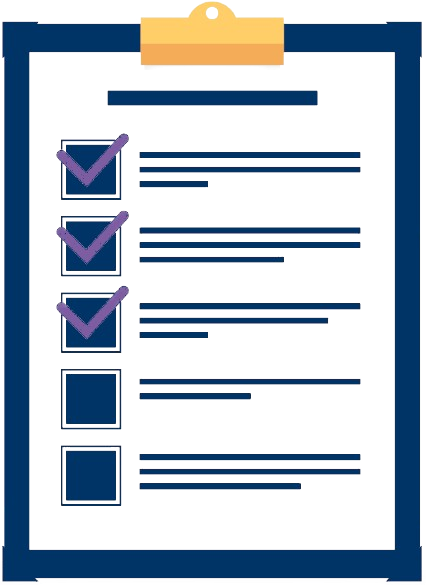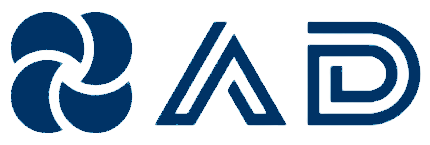Suggestions based on the Question and Answer that you are currently viewing
A GTAW operation is performed on low carbon steel, whose unit melting energy is 10.3 J/mm3. The welding voltage is 22 volts and the current is 135 amps. The heat transfer factor is 0.7 and the melting factor is 0.65. If filler metal wire of 3.5 mm diameter is added to the operation, the final weld bead is composed of 60% volume of filler and 40% volume base metal. If the travel speed in the operation is 5 mm/sec, determine (a) cross-sectional area of the weld bead, and (b) the feed rate (mm/sec) at which the filler wire must be supplied.
What are the two basic types of control charts for attributes?
New financial technologies are widely used in regulated sectors like finance and banking. Do you think that regulatory scrutiny hinders financial innovation and could even impede its progress, or do you think regulations shouldn’t have an impact on the advancement of fintech? (LO5)
A direct extrusion operation produces the cross section shown in Figure P19.32(d) from an aluminum billet whose diameter = 150 mm and length = 900 mm. The flow curve parameters for the aluminum are K = 240 MPa and n = 0.16. In the Johnson strain equation, a = 0.8 and b = 1.5. Determine (a) the extrusion ratio, (b) the shape factor, (c) the force required to drive the ram forward during extrusion at the point in the process when the billet length remaining in the container = 850 mm, and (d) the length of the extruded section at the end of the operation if the volume of the butt left in the container is 600,000 mm3 .
Is voluntary unemployment the same as frictional unemployment?
A shareholder receives appreciated noncash property in a corporate distribution and assumes a liability attached to the property. How does this assumption affect the amount of gain the corporation recognizes? From the corporation’s perspective, does it matter if the liability assumed by the shareholder exceeds the property’s gross fair market value?
Presented below is information related to Viel Company at December 31, 2014, the end of its first year of operations. Sales revenue $310,000 Cost of goods sold 140,000 Selling and administrative expenses 50,000 Gain on sale of plant assets 30,000 Unrealized gain on non-trading equity securities 10,000 Interest expense 6,000 Loss on discontinued operations 12,000 Allocation to non-controlling interest 40,000 Dividends declared and paid 5,000 Instructions Compute the following: (a) income from operations, (b) net income, (c) net income attributable to Viel Company controlling shareholders, (d) comprehensive income, and (e) retained earnings balance at December 31, 2014. (Ignore income taxes.)
Your client took accounting a number of years ago and was unaware of comprehensive income reporting. He is not convinced that any accounting standards exist for comprehensive income. Instructions Access the IFRS authoritative literature at the IASB website (http://www.iasb.org/ ). (Click on the IFRS tab and then register for free eIFRS access if necessary.) When you have accessed the documents, you can use the search tool in your Internet browser to respond to the following questions. (Provide paragraph citations.) (a) What IFRS addresses reporting in the statement of comprehensive income? When was it issued? (b) Provide the definition of total comprehensive income. (c) Explain the rationale for presenting additional line items, headings, and subtotals in the statement of comprehensive income. (d) What items of income or expense may be presented either in the statement of comprehensive income or in the notes?
The financial statements of Marks and Spencer plc (M&S) are available at the book’s companion website or can be accessed at http://annualreport.marksandspencer.com/_assets/downloads/Marks-and- Spencer-Annual-report-and-financial-statements-2012.pdf. Instructions Refer to M&S’s financial statements and the accompanying notes to answer the following questions. (a) What type of income statement format does M&S use? Indicate why this format might be used to present income statement information. (b) What are M&S’s primary revenue sources? (c) Compute M&S’s gross profit for each of the years 2011 and 2012. Explain why gross profit increased in 2012. (d) Why does M&S make a distinction between operating and non-operating profit? (e) Does M&S report any non-GAAP measures? Explain.
Why do financial market participants closely monitor money supply movements? (LO5)
Define resistivity as a material property.
What is concurrent engineering and what are its important components?
True or False.For purposes of determining head of household filing status, the taxpayer’s mother or father is considered to be a qualifying person of the taxpayer (even if the mother or father does not qualify as the taxpayer’s dependent) as long as the taxpayer pays more than half the costs of maintaining the household of the mother or father.Explain
As a newly enrolled accounting major, you are anxious to better understand accounting institutions and sources of accounting literature. As a first step, you decide to explore the FASB Conceptual Framework. Instructions Go to the FASB website, http://www.fasb.org, to access the FASB Concepts Statements. When you have accessed the documents, you can use the search tool in your Internet browser to respond to the following items. (Provide paragraph citations.) (a) What is the objective of financial reporting? (b) What other means are there of communicating information, besides financial statements? (c) Indicate some of the users and the information they are most directly concerned with in economic decision-making.
The financial statements of P&G are presented in Appendix 5B. The company’s complete annual report, including the notes to the financial statements, can be accessed at the book’s companion website, www. wiley.com/college/kieso. Instructions Refer to these financial statements and the accompanying notes to answer the following questions. (a) What were P&G’s total assets at June 30, 2011? At June 30, 2010? (b) How much cash (and cash equivalents) did P&G have on June 30, 2011? (c) What were P&G’s research and development costs in 2010? In 2011? (d) What were P&G’s revenues in 2010? In 2011? (e) Using P&G’s financial statements and related notes, identify items that may result in adjusting entries for deferrals and accruals. (f) What were the amounts of P&G’s depreciation and amortization expense in 2009, 2010, and 2011?
How would you go about deciding whether person A or person B gets more personal benefit from each of the following: (a) an electric fire; (b) a clothing allowance of £x; (c) free higher education; (c) child benefit? Do your answers help you in deciding how best to allocate benefits?
Distinguish between a determinable current liability and a contingent liability. Give two examples of each type.
Describe the circumstances in which an individual taxpayer with a net §1231 gain will have different portions of the gain taxed at different rates.
The financial statements of P&G are presented in Appendix 5B. The company’s complete annual report, including the notes to the financial statements, can be accessed at the book’s companion website, www.wiley.com/college/kieso. Instructions Refer to P&G’s financial statements and the accompanying notes to answer the following questions. (a) What type of income statement format does P&G use? Indicate why this format might be used to present income statement information. (b) What are P&G’s primary revenue sources? (c) Compute P&G’s gross profit for each of the years 2009–2011. Explain why gross profit decreased in 2011. (d) Why does P&G make a distinction between operating and nonoperating revenue? (e) What financial ratios did P&G choose to report in its “Financial Summary” section covering the years 2001–2011?
A steel casting has a cylindrical geometry with 4.0 in diameter and weighs 20 lb. This casting takes 6.0 min to completely solidify. Another cylindrical-shaped casting with the same diameter-to-length ratio weighs 12 lb. This casting is made of the same steel, and the same conditions of mold and pouring were used. Determine: (a) the mold constant in Chvorinov's rule, (b) the dimensions, and (c) the total solidification time of the lighter casting. The density of steel = 490 lb/ft3 .
Describe submerged arc welding (SAW).
Kelly Company had cash receipts from customers in 2014 of $142,000. Cash payments for operating expenses were $97,000. Kelly has determined that at January 1, accounts receivable was $13,000, and prepaid expenses were $17,500. At December 31, accounts receivable was $18,600, and prepaid expenses were $23,200. Compute (a) service revenue and (b) operating expenses.
What are the parameters that have the greatest influence in determining the ideal surface roughness Ri in a turning operation?
Discuss the appropriate treatment in the income statement for the following items: (a) Loss on discontinued operations. (b) Non-controlling interest allocation.
The information shown below and on page 1170 was disclosed during the audit of Elbert Inc. 1. Amount Due Year per Tax Return 2014 $130,000 2015 104,000 2. On January 1, 2014, equipment costing $600,000 is purchased. For financial reporting purposes, the company uses straight-line depreciation over a 5-year life. For tax purposes, the company uses the elective straight-line method over a 5-year life. (Hint: For tax purposes, the half-year convention as discussed in Appendix 11A must be used.) 3. In January 2015, $225,000 is collected in advance rental of a building for a 3-year period. The entire $225,000 is reported as taxable income in 2015, but $150,000 of the $225,000 is reported as unearned revenue in 2015 for financial reporting purposes. The remaining amount of unearned revenue is to be recognized equally in 2016 and 2017. 4. The tax rate is 40% in 2014 and all subsequent periods. (Hint: To find taxable income in 2014 and 2015, the related income taxes payable amounts will have to be “grossed up.”) 5. No temporary differences existed at the end of 2013. Elbert expects to report taxable income in each of the next 5 years. Instructions (a) Determine the amount to report for deferred income taxes at the end of 2014, and indicate how it should be classified on the balance sheet. (b) Prepare the journal entry to record income taxes for 2014. (c) Draft the income tax section of the income statement for 2014, beginning with “Income before income taxes.” (Hint: You must compute taxable income and then combine that with changes in cumulative temporary differences to arrive at pretax financial income.) (d) Determine the deferred income taxes at the end of 2015, and indicate how they should be classified on the balance sheet. (e) Prepare the journal entry to record income taxes for 2015. (f) Draft the income tax section of the income statement for 2015, beginning with “Income before income taxes.”
The benefits of buying with AnswerDone:

Access to High-Quality Documents
Our platform features a wide range of meticulously curated documents, from solved assignments and research papers to detailed study guides. Each document is reviewed to ensure it meets our high standards, giving you access to reliable and high-quality resources.

Easy and Secure Transactions
We prioritize your security. Our platform uses advanced encryption technology to protect your personal and financial information. Buying with AnswerDone means you can make transactions with confidence, knowing that your data is secure

Instant Access
Once you make a purchase, you’ll have immediate access to your documents. No waiting periods or delays—just instant delivery of the resources you need to succeed.
